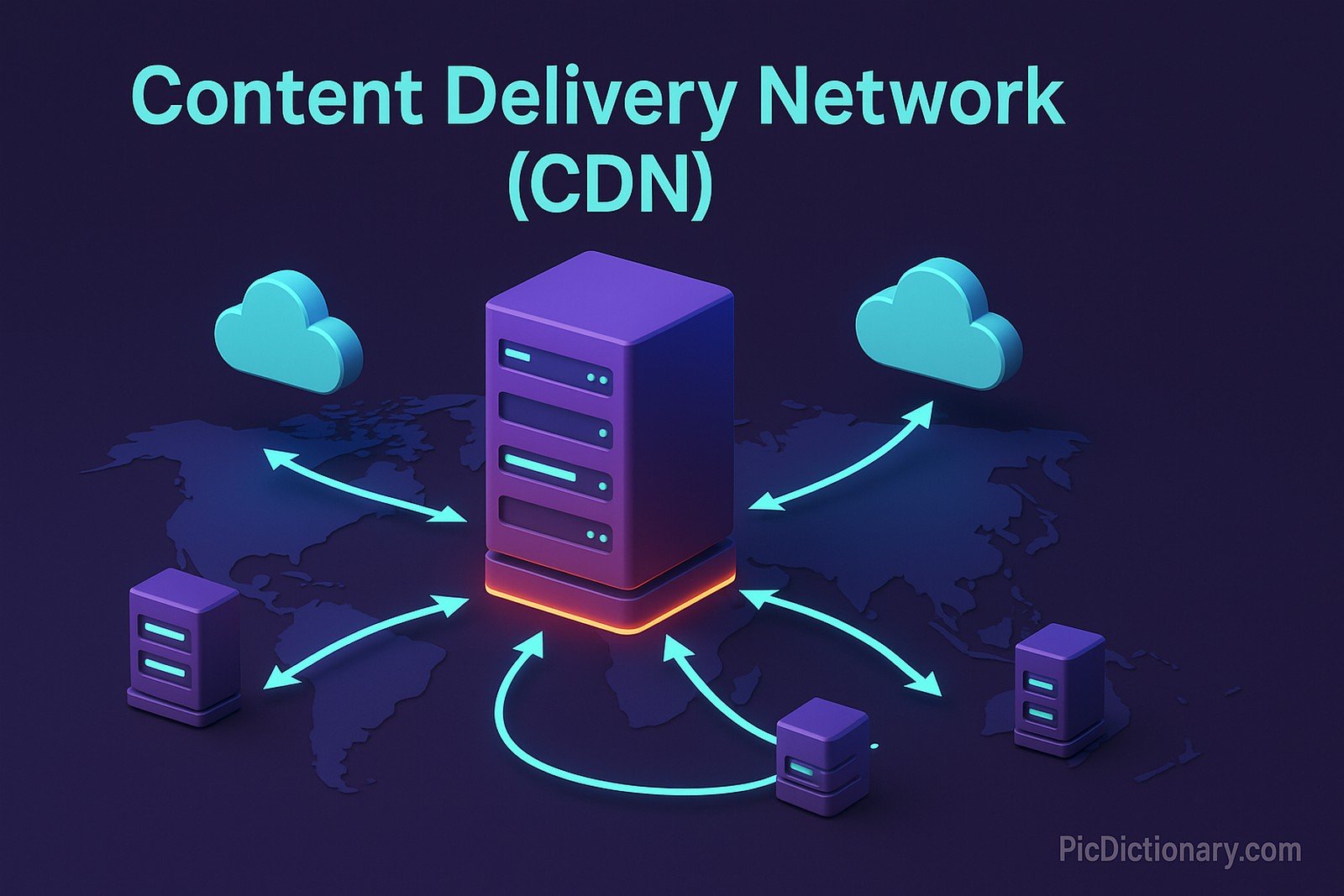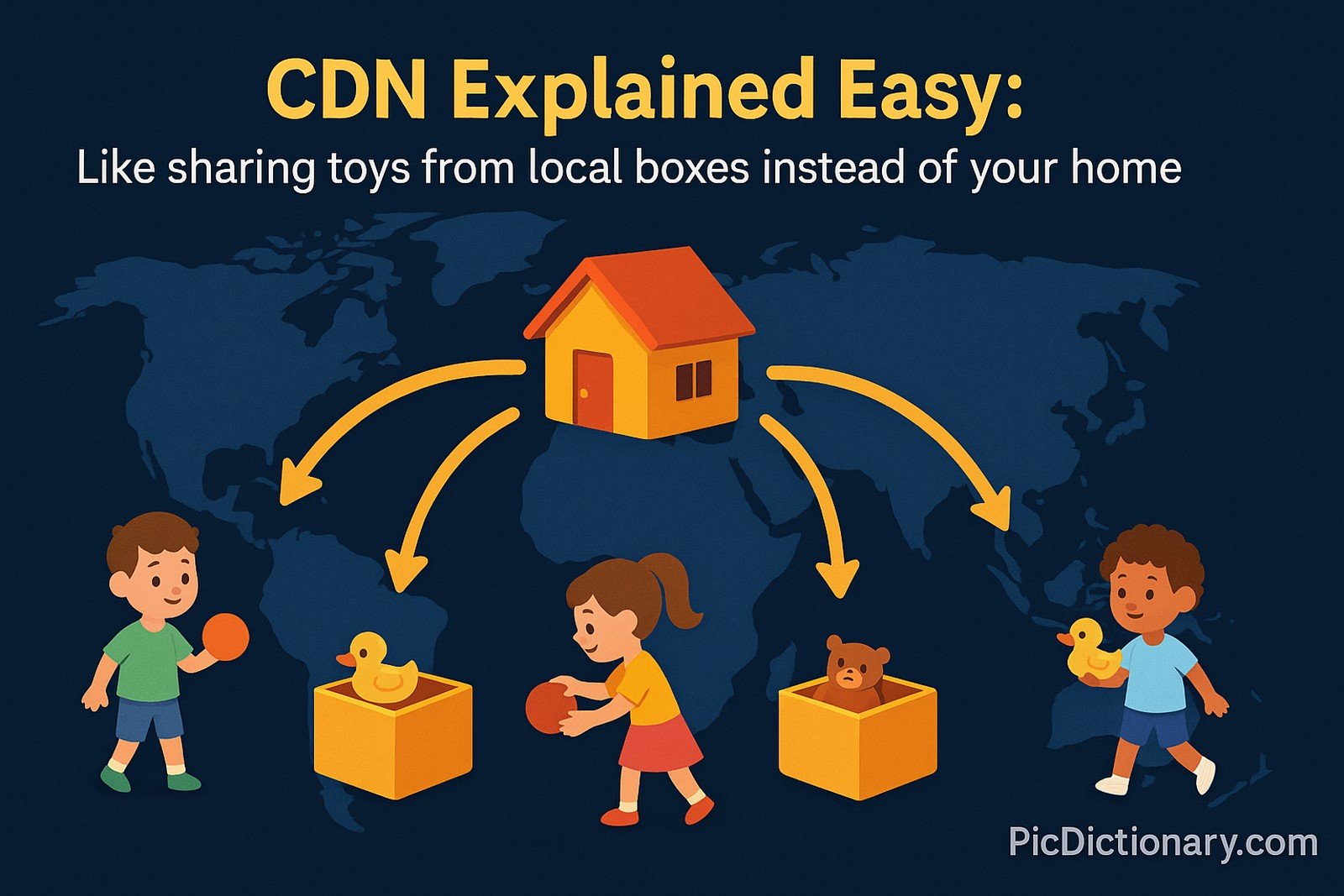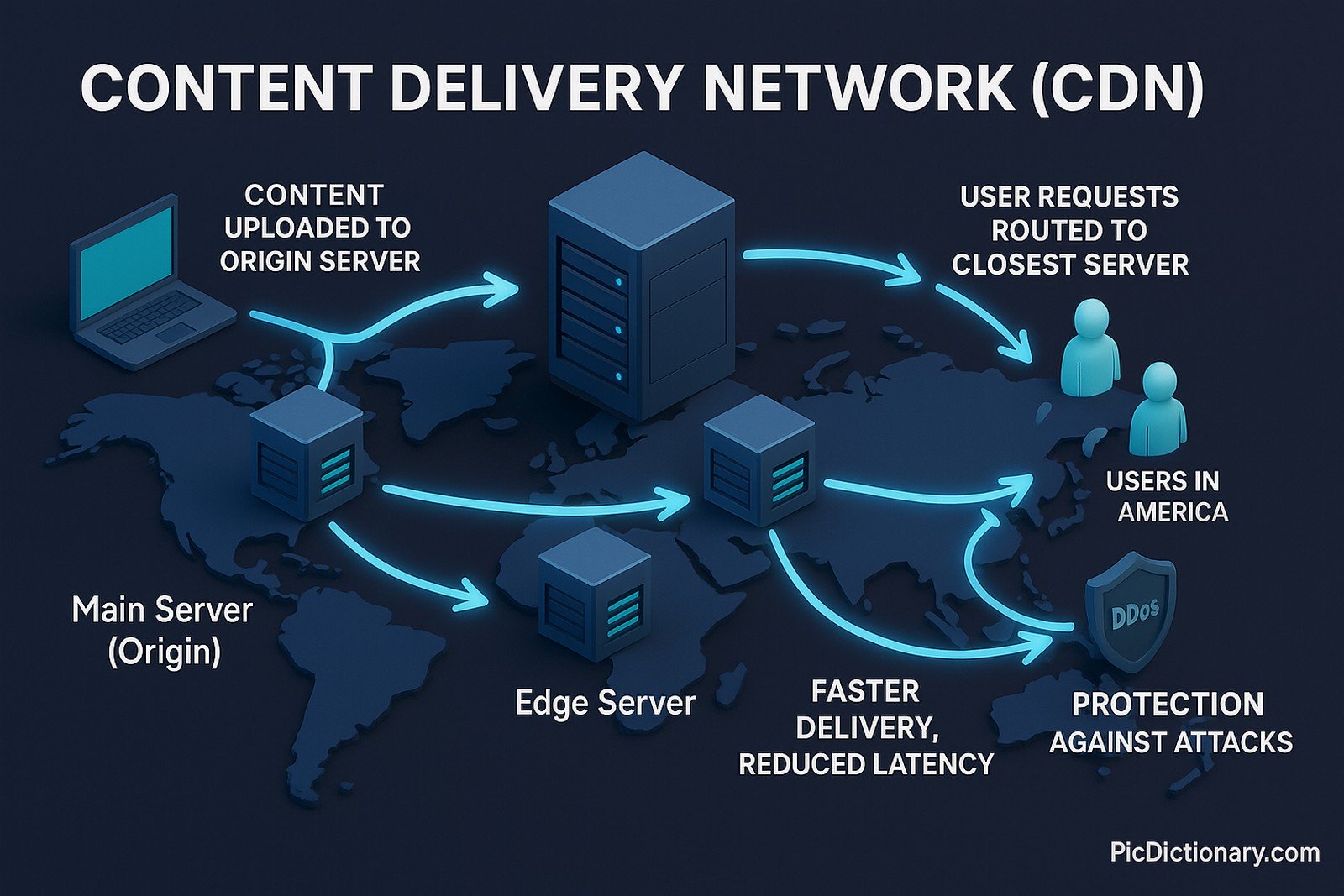Content Delivery Network (CDN)

Quick Navigation:
- Content Delivery Network (CDN) Definition
- Content Delivery Network (CDN) Explained Easy
- Content Delivery Network (CDN) Origin
- Content Delivery Network (CDN) Etymology
- Content Delivery Network (CDN) Usage Trends
- Content Delivery Network (CDN) Usage
- Content Delivery Network (CDN) Examples in Context
- Content Delivery Network (CDN) FAQ
- Content Delivery Network (CDN) Related Words
Content Delivery Network (CDN) Definition
A Content Delivery Network (CDN) is a network of geographically distributed servers that work together to deliver digital content like websites, videos, and images to users faster and more reliably. CDNs reduce latency by caching content closer to end-users and optimizing delivery routes. They are crucial for handling traffic surges, enhancing website performance, and protecting against cyber threats like DDoS attacks. Major companies use CDNs to ensure consistent, high-speed access to their content worldwide.
Content Delivery Network (CDN) Explained Easy
Imagine you have to share your toys with friends all around the world. Instead of sending them from your home every time, you place toy boxes in different cities. Whenever a friend wants a toy, they get it from the nearest box. A CDN works similarly — it stores website content in many locations so people can access it quickly and easily.
Content Delivery Network (CDN) Origin
The concept of a CDN emerged in the late 1990s, as the internet experienced rapid growth and websites needed to serve content faster across the globe. Companies began building infrastructure to distribute content closer to users, leading to the creation of the first CDN services.
Content Delivery Network (CDN) Etymology
The term derives from "content" referring to digital data, "delivery" indicating the act of transmitting it, and "network" describing the system of interconnected servers.
Content Delivery Network (CDN) Usage Trends
Over the past decade, CDN usage has surged with the rise of streaming media, e-commerce, and cloud services. Companies of all sizes leverage CDNs for speed, scalability, and security. CDNs are now integral to mobile content delivery and live event broadcasting, reflecting their essential role in the modern internet.
Content Delivery Network (CDN) Usage
- Formal/Technical Tagging:
- Networking
- Web Performance
- Cybersecurity - Typical Collocations:
- "CDN provider"
- "CDN caching"
- "global CDN network"
- "optimize delivery with CDN"
Content Delivery Network (CDN) Examples in Context
- A streaming service uses a CDN to deliver high-quality videos without buffering.
- E-commerce sites use CDNs to ensure fast page loads during shopping festivals.
- News websites rely on CDNs to handle sudden traffic spikes when breaking news occurs.
Content Delivery Network (CDN) FAQ
- What is a CDN?
A CDN is a network of servers that delivers content quickly to users worldwide. - Why is a CDN important for websites?
It reduces load times, enhances user experience, and improves security. - Can small businesses use CDNs?
Yes, many CDN services cater to small and medium-sized businesses. - How does a CDN reduce latency?
By caching content closer to users and optimizing delivery paths. - Are CDNs only for large companies?
No, they are used by websites of all sizes to improve performance. - Can a CDN protect against DDoS attacks?
Yes, CDNs help mitigate DDoS attacks by distributing traffic across servers. - Do CDNs work with mobile apps?
Absolutely, CDNs speed up content delivery for mobile applications too. - Are CDNs expensive to use?
Pricing varies, and many providers offer affordable plans for smaller sites. - What are some popular CDN providers?
Examples include Cloudflare, Akamai, and Amazon CloudFront. - How does a CDN help with SEO?
Fast-loading websites improve user engagement and search rankings.

Content Delivery Network (CDN) Related Words
- Categories/Topics:
- Web Infrastructure
- Networking
- Cloud Computing
Did you know?
The world’s largest CDN networks handle over 100 terabits of data per second, delivering everything from live sports broadcasts to software updates globally, ensuring millions of users enjoy seamless online experiences.
PicDictionary.com is an online dictionary in pictures. If you have questions or suggestions, please reach out to us on WhatsApp or Twitter.Authors | Arjun Vishnu | @ArjunAndVishnu

I am Vishnu. I like AI, Linux, Single Board Computers, and Cloud Computing. I create the web & video content, and I also write for popular websites.
My younger brother, Arjun handles image & video editing. Together, we run a YouTube Channel that's focused on reviewing gadgets and explaining technology.



Comments powered by CComment